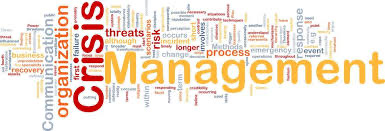
Taxpayers often turn to the government when they are overwhelmed and stressed out by personal circumstances. A fragmented experience across government websites compounds their distress both increasing the burden on call center staff and the cost of meeting taxpayers needs. A consistent, thoughtfully designed experience (starting with websites and contact centers) will make a tremendous difference in the lives of taxpayers and government employees.
The government agency will better serve all stakeholders by establishing a focus to oversee the design and implementation of a human-centered design centric strategy that:
- identifies and responds to key touchpoints in a stakeholder’s journey
- streamlines, integrates, and scales websites and call centers consistently over time
- takes a holistic, iterative approach to prioritizing improvements across channels
- maintains a mobile experience first philosophy (people seeking information often
- use mobile devices first because they want information immediately, or rely on mobile exclusively because it is what they can afford)
- uses clear, concise, and consistent language and messaging across all channels
- establishes a feeling of trust by providing consistent experiences across channels to different stakeholders firmly focuses on the future by laying the groundwork to
- integrate social media and emerging technologies in later phases of the project
Leading a human-centered design change initiative requires vision and broad oversight to bring stakeholders, products, technical processes, and communication into alignment.
Picture Jane, a retiree who needs help. She goes to one website on her phone to get information fast, but it doesn’t help. Later she visits another site on her laptop and can see it better, but finds additional information, organized in a new way, and described with different language.
Jane doesn’t know what to do or trust, so she tries a call center looking for a person to talk to instead. The wait times are long because so many others are having the same problems. When she finally gets through, the call center staff wants to help but they talk about services and options in yet another way.
Jane is distressed by her experience across siloed channels. She encounters disconnected technologies, has to translate between different language use, and finds that information is inconsistently organized or even offered — leaving her frustrated and miserable. The call center staff who takes her call can hear that misery as it overflows into their conversation making the staffer’s job harder, the call longer, and both the financial and emotional costs higher for both.
Each time Jane’s journey plays out for another taxpayer or call center staffer, taxpayers lose confidence in the government agency and increase the costs of call center operations.
A single focus and oversight for government Contact Centers and the internet presence is a logical first step towards an improved Customer experience. Needed research must be conducted across channels and changes prioritized coherently across all platforms to maximize results. If the system is not treated as a whole, customer experience will continue to be fragmented and frustrating no matter how many isolated improvements are made over time.
A seamless experience requires a consistent approach to technological solutions, human needs, and organizational responses. The goal is to inspire taxpayer confidence and government efficiency by making it easy to start with a website, reach out to a call center if needed, and then complete tasks on the web when they are ready. In the future, integrating social media will increase responsiveness and better serve millennials and future generations.
A robust online database of Frequently Asked Questions can enhance customer experience based on insights from web analytics and call center topics. Web analytics and the call center knowledge management technology can be used to identify frequently accessed data, searches that come up empty, and how often users access particular information. In depth interviews with call center personnel can shape resource allocation and better prepare them to address complex situations since the basics are covered in a searchable database.
Starting with aggregated website and call center data creates a solid foundation for human-centered research to address persistent pain points across channels then effectively design and deliver satisfying stakeholder experiences.
What if Jane went to a central website and found the basic information she needed quickly and easily? If she still wasn’t sure what to do in her situation, she could reach out to a call center. When she did, her wait time would be shorter since more people were finding what they needed on a streamlined easily searchable site that highlights frequently asked questions. Jane wouldn’t be so upset when she connected with a staff member, her questions could be answered more quickly, costs would go down, and Jane would regain confidence in the government agency. Later when it worked for her schedule, she could fill out any required forms on the website and get immediate confirmation that they were submitted. Now when Jane talks about the government agency she shares her experience — I get help when I need it, I get things done on my schedule, and I trust that the government agency has my back.
Integrating processes, products, services, and content in an organization like a government agency takes time, vision, and leadership. Consolidating oversight with the right vision offers the best possible chance to successfully transition the taxpayers to a coherent seamless experience.




Leave a Reply